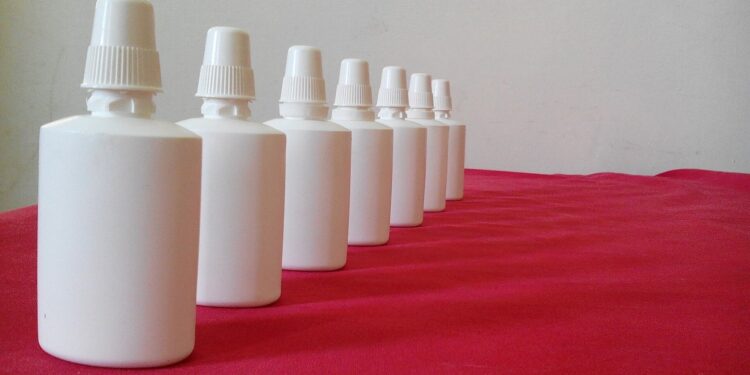Credit: Pixabay/CC0 Public Domain
A unique inhaled flu vaccine candidate based on technology developed by researchers at the University of Wisconsin-Madison is safe and could boost protection against seasonal and pandemic flu for people at risk of severe illness when given in addition to the annual flu vaccine.
These are the results of a randomized, controlled trial of the vaccine candidate, administered as a nasal spray in conjunction with the annual injection to a group of people aged 65 to 85 in 2022. The results were recently published in the journal Lancet Infectious Diseases.
A different flu vaccine
The vaccine candidate being tested in this study, FluGen’s M2SR, is based on technology developed by researchers Yoshihiro Kawaoka and Gabriele Neumann at the University of Wisconsin-Madison more than a decade ago. It differs in several ways from seasonal flu vaccines, which for decades have provided suboptimal protection against severe disease in vulnerable people.
Conventional flu vaccines use an inactivated virus that is injected into muscle tissue, prompting the immune system to create antibodies that can recognize and fight the virus. The M2SR vaccine candidate instead uses a live virus that has had a key replication gene deleted from its DNA. The vaccine is administered directly into the upper respiratory tract via nasal spray.
Deleting the gene means that “the gene can’t continue to replicate and make you sick, but it stimulates the immune system like a natural viral infection,” says Pamuk Bilsel, who led the study as chief scientific officer of FluGen, a spinoff company founded by Kawaoka, Neumann and FluGen CEO Paul Radspinner.
A safety study with promising results
In 2022, FluGen tested the vaccine candidate in more than 300 people in the United States aged 65 to 85, assessing its safety and the immune response it elicited.
Some participants received only the annual flu vaccine formulated for people in this high-risk age group, while others received only the candidate vaccine in nasal spray form. A third group received both vaccines, and a fourth group received the regular vaccine and a placebo in nasal spray form.
Participants who received the nasal spray vaccine candidate tolerated it well, with a minority reporting minor side effects, including a runny nose and nasal congestion.
Blood and nasal swab samples collected one day and again 2 to 4 weeks after vaccination showed that participants who received both the nasal spray vaccine and the flu vaccine had significantly more protective antibodies and other protective immune responses not seen in participants who received the flu vaccine alone.
“These participants not only received the antibodies that conventional flu vaccines provide, but also local immunity, mucosal immunity, and T-cell immunity,” Bilsel says. “It’s a broad-spectrum, multifaceted response.”
Better protection against annual flu and possibly pandemics
Although the study focused on assessing the safety of the vaccine candidate, data on the immune responses it elicited suggest that vulnerable older adults would be better protected against influenza if they received both the influenza vaccine and the nasal spray vaccine.
A more protective immune response, which could be achieved by administering both vaccines, could apply to both seasonal influenza and potential pandemic strains, since current vaccines are the first line of defense if a strain like the currently circulating H5N1 avian influenza becomes widely transmissible to humans. Although the vaccine candidate is promising, larger studies are planned to confirm that it is safe and protective. These studies will take a few years.
“Seniors deserve better options to prevent infections, illnesses and hospitalizations from influenza and we finally believe we have one,” Radspinner said. “We hope current manufacturers will agree and work with them to find ways to make this solution a reality for patients as soon as possible.”
More information:
Joseph Eiden et al., Safety and immunogenicity of single-replication intranasal influenza vaccine deficient in the H3N2 M2 gene, alone or coadministered with inactivated influenza vaccine (Fluzone High-Dose Quadrivalent) in adults aged 65 to 85 years in the United States: a multicenter, randomized, double-blind, double-dummy phase 1b trial, Infectious diseases in The Lancet journal (2024). DOI: 10.1016/S1473-3099(24)00351-7
Provided by the University of Wisconsin-Madison
Quote:Nasal spray flu vaccine shows promise when given alongside high annual dose (2024, August 15) retrieved August 15, 2024, from
This document is subject to copyright. Apart from any fair dealing for the purpose of private study or research, no part may be reproduced without written permission. The content is provided for informational purposes only.



